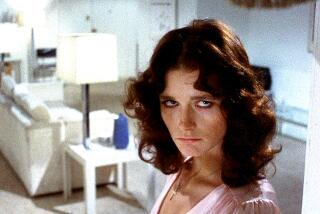A Publishing House Is Born From a Love of Duchampiana
French artist Marcel Duchamp is known as a Cubist painter, founder of American Dada, inventor of Readymades, father of Conceptualism--and for retiring from art to play chess. He is not known for having West Coast connections.
“When I moved to Los Angeles in 1986, I knew two things about Duchamp on the West Coast,” said Bonnie Clearwater, editor and publisher of the new book “West Coast Duchamp.” “I had learned about the Western Round Table on Modern Art and the Pasadena retrospective, but that was all,” she said, referring to a legendary discussion of art-world luminaries held in San Francisco in 1949 and to Duchamp’s first full-scale retrospective, organized in 1963 by Walter Hopps at the Pasadena Art Museum.
She had stashed away those tidbits of Duchampiana when she was curator of the Rothko Foundation in New York, from 1981 to 1986. But upon her arrival in Los Angeles, as executive director of art programs at the Lannan Foundation, she began to hear Duchamp stories. Incredulous and intrigued, she would ask if these memories of Duchamp had been published. The answer was invariably no. “I was finding all this material and it hadn’t been documented,” she said, over breakfast in Marina del Rey.
Clearwater couldn’t immediately commit her new knowledge to print. She worked for the Lannan Foundation until 1989, edited Visions, a Los Angeles-based visual art quarterly, during the following year, and embarked on a catalogue raisonne of Ed Ruscha’s work.
But she had an idea that grew powerful enough to launch her own publishing company, Grassfield Press.
She also had help. Several scholars who had explored Duchamp’s West Coast presence were willing to write essays for a book. Owners of the Shoshana Wayne Gallery in Santa Monica, who were planning a Duchamp exhibition, ordered 750 copies of the nonexistent book, thus providing financial assistance. And her husband James, a former assistant director of the Grey Art Gallery at New York University who was working at the Margo Leavin Gallery in West Hollywood, would handle marketing and distribution.
About a year ago, the Clearwaters pulled up their Los Angeles stakes, moved to Miami Beach and established Grassfield Press. Why Miami Beach? “We like it. There’s a lot going on in contemporary art there,” she said, conceding the irony of moving to the East Coast to put out a book about West Coast art. (The couple became enamored with Florida when the Lannan Foundation operated a small museum near Palm Beach, where the late J. Patrick Lannan had a home.)
The Clearwaters have accomplished a coast-to-coast move, set up the press and published their first book in one year flat--a feat only possible because the writers had already done considerable research, Clearwater said.
Francis M. Naumann, a specialist in Dada studies, wrote about Frederic C. Torrey, a San Francisco print dealer who was the first owner of Duchamp’s controversial Cubist painting, “Nude Descending a Staircase.” Naomi Sawelson-Gorse, an archivist at the Francis Bacon Library in Claremont, provided an essay on Duchamp collectors Walter and Louise Arensberg, who lived in Hollywood.
Dickran Tashjian, professor of comparative culture at UC Irvine, covered Duchamp’s Pasadena retrospective. Duchamp’s influence on California artists was tracked by Robert L. Pincus, art critic of the San Diego Union and author of a book on Edward Kienholz and Nancy Reddin Kienholz.
Clearwater herself contributed an essay on the Western Round Table on Modern Art. “It was so much fun. I fell in love with Duchamp,” she said, recalling her sessions with a nine-hour recording of the 1949 meeting.
In addition to her writing and editing, Clearwater conducted research along with the scholars. The final product includes “Some Belated Acknowledgments” for the 1963 retrospective by curator Walter Hopps, plus appendixes on the Western Round Table on Modern Art, a 1971 Duchamp Festival at UC Irvine, a 1990 symposium on “West Coast Duchamp” and the Shoshana Wayne Gallery’s 1990 Duchamp exhibition.
Starting a fine-art press in the midst of a recession might seem risky, but the Clearwaters’ bare-bones, hands-on approach got them through the first year. Having the book printed in Korea kept costs down, while advance sales covered overhead for the edition of 3,000 (including 1,150 cloth copies and 1,850 in paper).
Museum and art bookstores are already snapping up the book, Clearwater said. The Philadelphia Museum of Art, home of the Arensberg collection, has ordered 60 copies, and response has been enthusiastic in Los Angeles and San Francisco. “We had no idea this would be such a hot project,” she said.
Much of the appeal is new information about an enduring artist, but the book was designed to be enticing. “It has 128 pages. You can read it in an evening,” she said, noting that the clean design features generous white space, high-quality reproductions and large type. “We want you to read the footnotes,” she said.
More to Read
The biggest entertainment stories
Get our big stories about Hollywood, film, television, music, arts, culture and more right in your inbox as soon as they publish.
You may occasionally receive promotional content from the Los Angeles Times.










